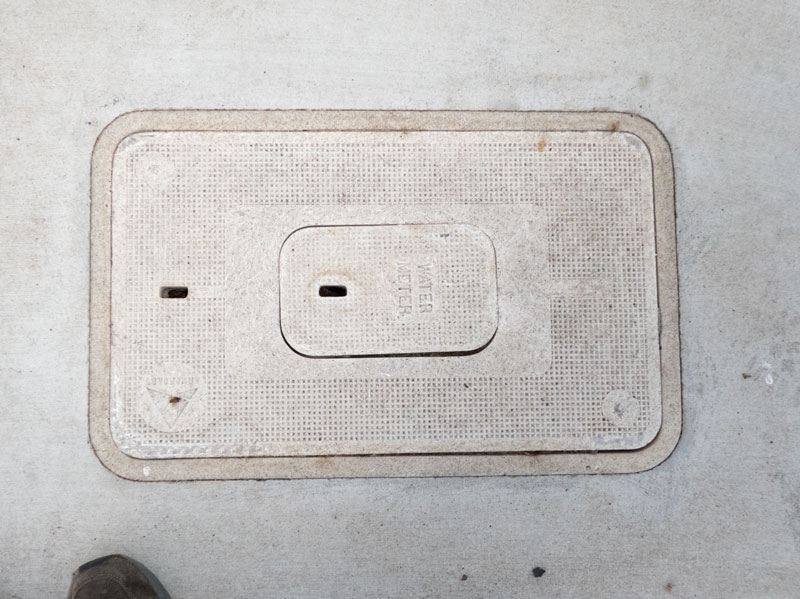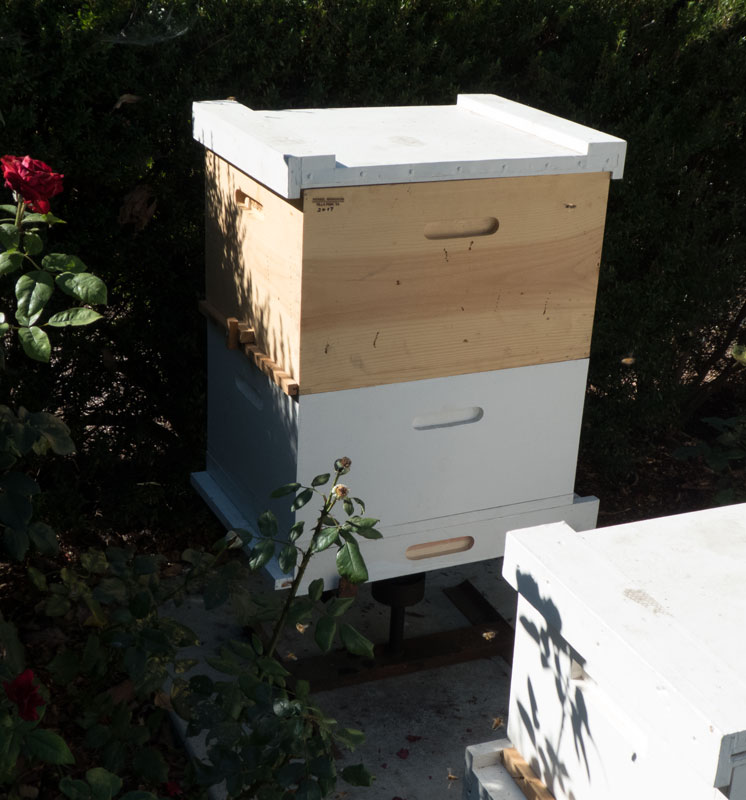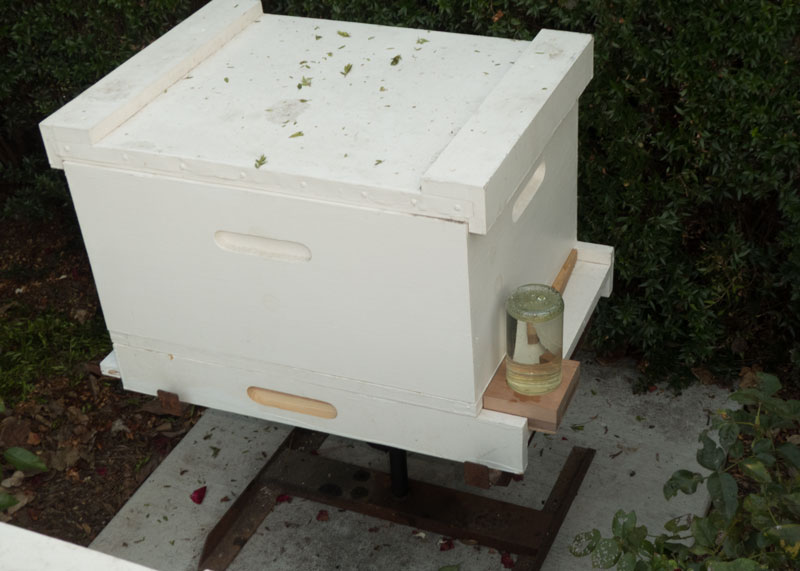
SoCal Beekeeping
Cutout of Bees in a Utility Box
9/27/2017
Michael Henderson
When we travel, we board our dog in a kennel. When we were picking up our puppy after a trip, the owner asked me if I knew anything about bees. I replied that I know a bit and asked him why he was asking that question. He told me that they had a swarm of bees that set up housekeeping in a utility box in front of their place and they would have to exterminate the bees because of the dogs.
I agreed to collect the bees but it's probably a hopeless case. Late swarms are usually European bees that have been driven out of their hive by varroa mites. And if that's not the situation, late swarms don't have time to collect enough nectar for the winter and to build up their numbers enough to stay warm on the cold winter nights. But faced with extermination, I agreed to collect them.
I waited until sundown so that all the foragers would be back in the box. Here's the box they were in. Can't see any bees, can you? They were all settled in for the night.

But they're there.

My wife took all the rest of the pictures and she wasn't suited up so she stayed a bit away. The bees did not act that defensively - just flew around but stayed close to the box.
Here I am getting everything ready. I'm suited up and with gloves because we have Africanized bees in this area and you never know how a group like this will react. You can see the bee vacuum.

I started by just removing the small inspection cover and sucked in the bees that I could.

But I had to take the main cover off to really reach the bees. It was reported to me that the bees were only there for two days and that's probably true. You can see that they just started making comb (pointed to by arrow).

Gradually I captured the bees.

I would wait unit some of the bees that were flying around would settle back in the box and then I'd capture them. By the time I finished, I think I had just about every bee.

I took them home and put the bee vacuum on a hive, with an excluder at the bottom. I fed them some honey. This picture was taken the next day. It was dark by the time I got them home.

A view into the bee vacuum. They're still clustered at the top but I lowered the sliding screen after I took this picture to force them down into the brood box. I probably should have put a "filler" in half of the brood box so they only had 5 frames to work but...

So now, I have another hive I didn't want and which probably won't survive the winter. But I'll feed them and give them a chance.
[Update] Since my last post the bees have gone down into the hive body and are clustered between two frames (with foundation) so I removed the bee vacuum.
I made a sugar water feeder for the hive. I used a small jar because they're a small hive right now. But they're working on the feeder. I can tell that the level of the sugar water has fallen in one day. Here's a view of the hive with the feeder.

And a close-up of the feeder. The bees are active, with foragers flying out at a pretty decent rate. I'll check them in a week or so and see how much comb they've made and whether there are any eggs in the cells. Just wish there was more time for them to build up before cold weather.

[Update 10/2/2017] My wife raised the question of whether the sugar water solution would spoil so I asked that question to Randy Oliver at the seminar I went to on 9/30/2017. He recommended adding a small amount of bleach to the sugar water to help it from spoiling. He commented that bees seem to love chlorinated water - that they will fly over other water sources to get to a swimming pool which contains chlorinated water. I believe he said one teaspoon of bleach per gallon of sugar water.
One reason I think that bees like chlorinated water is the odor. When a bee goes back to the hive and tells other bees about the water source, the bee gives a direction to the water but also passes along the odor of the water to the other bees. The directions the bee gives to the recruited bees is not precise so the recruited bees need the odor to find the water. Pure water has no odor.
Sadly, the hive does not seem to be doing well. I may not have gotten the queen. There's a small amount of comb being made but no sign of eggs.
[Update 10/4/2017] It's clear there's no queen in the hive so the hive is dead. I don't know if I didn't collect her, or if she was killed before I got there. The people at the kennel had done some things to the bees before I told them to just leave them alone and I'd come get them.
It's not even possible to get a queen for the hive. The number of bees is too small, and by now, the workers are too old.
I also learned that the Boardman feeder has some serious problems. At night, when it's cool, the air in the top of the jar "shrinks", which pulls in more air from the bottom of the feeder. Then, when the sun comes up and heats the air, it expands and forces a lot of sugar water out of the jar - in my case, a lot more than the bees can collect.
So for a hobbyist with a small hive, you'd have to keep the jar as full as possible each evening to minimize the amount of air in the top of the jar. As the air area gets larger, the problem gets worse.
[Update 10/08/2017] The hive is gone. There were only a few bees left and I needed the hive box for another hive so I shook the remaining bees out and took the box.